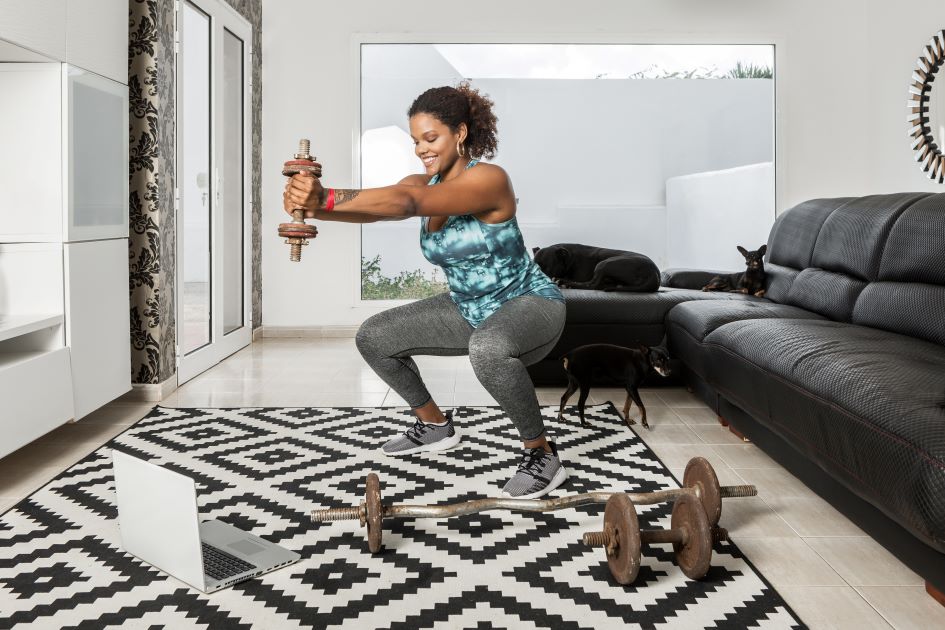You don’t need a fancy gym or expensive equipment to get in shape. With the right approach, your living room or backyard can become your personal fitness zone. In fact, home workouts – using just your body weight or a few simple tools – have surged in popularity (they even became a go-to fitness trend during the pandemic, health.harvard.edu). They’re convenient and scientifically proven to deliver results. If you’ve ever felt too busy or intimidated by the gym, read on. Here’s how home and minimal-equipment routines can keep you strong, healthy, and motivated.
Benefits of Working Out at Home
Home-based workouts eliminate many common barriers to fitness. No time to drive to the gym? No problem – you can exercise anytime, anywhere, since “all you have to do is move your body”. Worried about cost or space? Body-weight training requires little to no equipment, so no pricey memberships or bulky machines are needed. You can even enjoy total privacy and skip the crowds at the gym.
It works. Research confirms that body-weight exercises can build muscle and improve fitness without any external weights. For example, a 10-week calisthenics program boosted participants’ aerobic capacity by 33% and core endurance by 11% – impressive gains achieved with just body weight. Regular home exercise also delivers the same health benefits as gym workouts: it helps lower your risk of disease while lifting your mood and reducing stress, health.harvard.edu. Even the military and elite athletes rely on body-weight routines to stay in top shape. Fitness experts note that moves like squats and push-ups can be just as effective for strength-building as lifting weights in a gym, texashealth.org, with far less equipment. And because you’re using your own body as resistance, there’s generally less strain on your joints and a lower risk of injury compared to hoisting heavy weights.
Minimal Equipment You Need to Get Started
One of the best parts of home workouts is that you don’t need an elaborate setup. Your body is your #1 piece of equipment. Still, a few items can enhance your routine nutritionstudies.org:
- Exercise mat: For comfort and traction during floor exercises.
- Dumbbells or a kettlebell: Free weights to add resistance for strength moves.
- Resistance bands: Versatile tools for strength training and stretching.
- Jump rope: A simple, space-efficient tool for cardio.
Don’t have any gear yet? No problem – get creative with household objects. Fill a backpack with books for a makeshift weight, use gallon water jugs or canned goods as dumbbells, and grab a sturdy chair for step-ups or triceps dips. You can also run up and down the stairs for a quick cardio burst. In short, you already have what you need to get fit at home.
Set up a safe workout space by clearing some room to move freely (a flat, non-slip surface is ideal), health.harvard.edu.
Building an Effective Home Workout Routine
Always begin with a warm-up: spend 5–10 minutes on light cardio (march in place, do some jumping jacks) and dynamic stretches to prepare your body and prevent injury, health.harvard.edu. Once you’re warmed up, focus on a mix of strength and cardio moves. Body-weight strength exercises should form the core of your routine – think push-ups, squats, lunges, and planks. These compound movements work several muscles at once. Try arranging a few exercises into a circuit to keep your heart rate up: do a set of squats, then push-ups, then hold a 30-second plank. Rest briefly and repeat 2–3 times. If you want extra cardio, add a 30-second burst of high knees or jumping jacks between strength moves for a home-grown HIIT workout.
Throughout your routine, focus on good form. It’s better to do fewer reps with correct technique than lots of sloppy ones – quality over quantity. Modify exercises as needed to match your fitness. Beginners can do push-ups on their knees or incline against a wall, while advanced exercisers can try tough variations like feet-elevated push-ups or one-legged squats.
Remember to pace yourself and listen to your body. Aim for at least 2–3 strength-focused workouts per week on non-consecutive days to allow muscle recovery. Finally, finish each workout with a quick cool-down: march in place to slow your heart rate and do some static stretches to relax your muscles.
Staying Motivated and Consistent
The secret to home workout success is consistency. Treat your workout like an appointment with yourself – schedule it into your day and stick to it. Block off a time (morning or evening – whatever works) and eliminate distractions during that window (set your phone aside and let family know it’s your “me time” to exercise) nutritionstudies.org.
Keep your routine fun and engaging so you look forward to it. Try new workout videos or fitness apps (there are countless free options online, from yoga and Pilates to kickboxing). Variety prevents boredom and keeps your body guessing. If you need an extra dose of accountability, join an online challenge or virtual fitness community. Working out “together” with others – even via a Facebook group or app – gives you extra motivation to stay on track nutritionstudies.org.
Pro Tip: On days you really don’t feel like exercising, tell yourself you’ll just do 10 minutes. Often, getting started is the hardest part – once you begin, you might finish a full workout after all. But even if you stop at 10 minutes, that’s a win because it’s still progress!
Conclusion
You have everything you need to stay fit at home – no more excuses. Minimal-equipment routines can help you build strength, boost endurance, and improve your health. The key is to start small, stay consistent, and make it enjoyable. So roll out that mat or grab that water jug and get moving.
If you found this guide helpful, be sure to check out our other health and fitness articles for more evidence-based tips and inspiration. Now it’s time to put what you’ve learned into action – you’ve got this!












